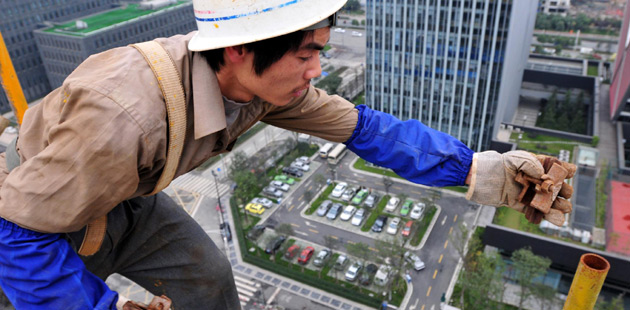Smart cities will reindustrialize urban areas
Updated: 2011-12-02 10:53
(chinadaily.com.cn)
|
|||||||||||
The software of cities can be modified through new technologies, but what about their hardware? "The Internet has changed our lives, but it has not yet changed our cities," remarked Vincent Guallart, chief architect at Barcelona City Hall, during a plenary session of the Smart City World Congress. The session was dedicated to debating the role of urban planners in designing the urban spaces in which we will live and work in the future.
Urban planners have played a fundamental role during critical moments in the history of cities, as demonstrated by Guallart as he summarized the urban development of Barcelona throughout its 2000 years of existence. "But now what? What's next?" he asked. According to Guallart, the key is to start by defining a city. "We could dissect a human body, and doctors from around the world would recognize the same anatomy and use the same terminology to solve or examine a particular problem. Yet we can't do the same with cities," he said. That is why Guallart's team, for the past 10 years, has been developing a model to define the anatomy of cities. Known as City Protocol, it is a veritable "city ID card" that Barcelona is aiming to promote worldwide.
Guallart briefly sketched the model, which is based on five major systems: Information, Water, Energy, Mobility and Production. This last area, where cities must generate jobs to continue attracting residents, could serve as the target for the surprising proposals of Neil Gershenfeld and the Center for Bits and Atoms (CBA), a research center at MIT that he directs. The CBA is the birthplace of initiatives like Fab Labs, factories in which state-of-the-art machines and digital technology are used to manufacture objects. Fab Labs could spark a veritable urban revolution to reverse the general trend of cities losing industrial production over the past half-century.
A new industrial revolution
"Public administrators must be more than managers, we must also be inventors of cities," affirmed Vincent Guallart. Proposals such as Fab Labs offer urban centers that have spent years striving to be completely post-industrial, the chance to become industrial again. "Instead of taking jobs out of cities, this new Industrial Revolution would see all the products consumed by citizens of a particular area produced locally," said Gershenfeld. In this way, he continued, cities would finally become truly self-sufficient, a scenario that he described as "a solution to avoid the economic and ecological disaster of the current global production system".
Other speakers referred to this need for innovation in urban planning. "We're only just beginning to imagine the city of the future," affirmed Gunter Pauli, entrepreneur and founder of Zero Foundation. He described several innovative projects, all characterized by extreme innovation, which focus on solutions that are not only healthier, more beautiful and more sustainable, but also much cheaper. These include solar panels that capture energy from both sides, houses built entirely of bamboo, and a school in Sweden designed so that the air in the classrooms is renewed every half hour.
A question of priorities
Nader Tehrani, Director of the Department of Architecture at MIT, continued along the same line of thinking in terms of innovation. According to Tehrani, the cornerstone of urban planning is the marriage of design and essence, of form and content. "Designing for Smart Cities means a designing killer app," he remarked. Tehrani presented one of the projects that respond to this philosophy: Casa la Roca, which features a large wall equipped with light sensors that enable it to expand or contract depending on the ambient lighting.
Ismael Fernandez, president of ISOCARP, was the most practical of the speakers in the plenary session, bringing the subject matter back to reality. "Many cities have more pressing needs than filling their streets with sensors," he said. According to Fernandez, the problem is that the cities that are currently growing do not follow ideas, but rather trends. Thus he believes that we need a paradigm shift—one that dramatically alters our approach to problem solving: a paradigm whereby "the life-style of residents shapes their city, and not vice versa."
Ismael Fernandez's vision was not far off from that of smart city technology company ATOS, as described by its head of R&D, Jose-María Cabanillas. According to him, one of the company's main pillars is "citizen-centric" developments.








